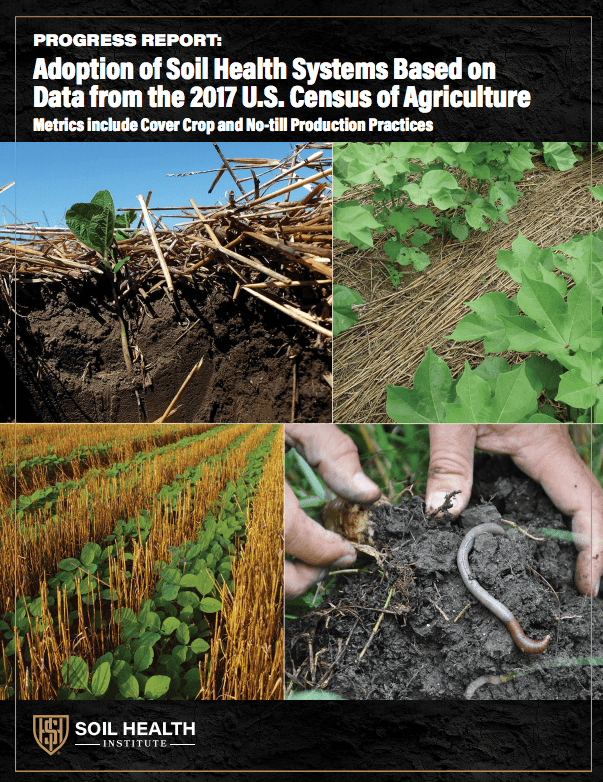
by Kitty Gifford
The Soil Health Institute (SHI) has released PROGRESS REPORT: Adoption of Soil Health Systems Based on Data from the 2017 U.S. Census of Agriculture. The analysis includes a state-by-state breakdown of both cover crops and no-till production.
Cover crop acreage grew rapidly between the Census years of 2012 and 2017, reflecting information seen in other data sources and reported by cover crop seed companies and farmers themselves.
A few highlights from the Census data include:
- Cover crop acres increased from 10.3 million acres in 2012 to 15.4 million acres in 2017, a 50% increase
- Eight states more than doubled their cover crop acreage from 2012 to 2017
- The number of farm operations with cover crops increased by 15.2% from 2012 to 2017, to a total of 153,402
The 2012 Census was the first one to gather data about cover crop use, so the 2017 Census reveals some positive trends in land use practices reflective of increased adoption of soil health management practices. Nationally farmers are planting 5 million more acres in cover crops, for a total of 15 million, since 2012.
Some key highlights relevant to soil health practices in New York:
- There are 295,433 acres planted in cover crops (up 37% from 2012).
- There are 337,968 acres of land using no-till practices (up 21% from 2012).
While these numbers are encouraging and speak to the soil health revolution of sorts going on in farming today, they are a fraction of the over 4 million acres of cropland in New York.
The benefits of planting cover crops include holding the soil in place, which provides resilience to soil erosion. No-till practices are a way of growing crops without disturbing the soil. The benefits include slowing the pace of organic matter decomposition so that nutrient release happens gradually.
There is still much work ahead to overcome barriers to adoption of soil health practices by farmers in New York and nationally. The New York Soil Health initiative is now in year three and we are continuing to support the ongoing efforts to advance soil health as detailed in our 2019 New York Soil Health Roadmap.